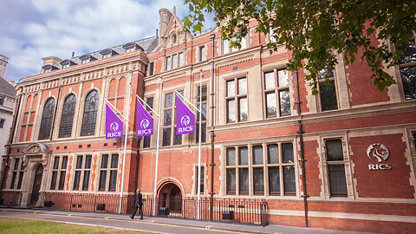Advances in technology have dramatically changed the way people live over recent decades. The advent of the internet and instant global connectivity has altered the way we socialise, the way we shop and the way we work. It is inevitable then that technology also has an impact on the design and functions of the built environment.
Now that we are experiencing the effects of climate change - or rather, climate crisis - there is an urgent interest in how people can live more sustainably and in harmony with the world's eco-systems. This has led to more interest around smart cities and smart buildings. Both concepts apply available technology to improve living conditions, be more environmentally friendly and provide solutions in context.
Covid-19 and the workplace
Designed to enhance occupier experience, smart buildings can improve health and safety aspects, support efficient energy management, and allow flexibility in how structures are maintained. The arrival of Covid-19 has made this even more of a necessity.
Public health, autonomy and adaptability have been prioritised in workplaces as employers look for ways to maintain their operations whilst ensuring workers are safe. Additionally, with buildings being stood empty for periods or needing to be modified for new norms, a spotlight has been thrown on energy efficiency. This is where smart buildings come to the fore.
Safer, sleeker, smarter
Buildings have always made use of industrial advances - lighting, plumbing and heating systems are historical examples of new knowledge being applied for better conditions - but never before have buildings used instant data to make real-time decisions and affect instant change. This is what defines a smart building; it can adjust itself to a given context based on data feedback.
Since Covid-19 impacted the world, many organisations have been risk assessing environments, evaluating hybrid working and exploring ways to optimise conditions. Whether it's better health and safety for workers or improved energy efficiency, smart buildings are proving their worth, but how can they help?
IoT sensors - tracking everything from movement and temperature to humidity and air pressure, these in-built sensors help facilities managers and employers understand the make-up of occupied buildings. Knowing how many people are in a building, where they are and what the airflow of areas are optimises health and safety in the environment. It also allows for additional security and autonomy in terms of access.
HVAC technology - HVAC stands for heating, ventilation and air-conditioning technology. The use of it allows a building to react to its surroundings for improved energy efficiency and eco-friendliness. By reacting to usage in real-time, the building can switch off lights and reduce heating when an area is unoccupied.
Analytics software - this software translates data collected by sensors and uses it to determine fault patterns which need addressing.
User interface technology - how information is displayed to the end user and building operators helps to flag potential issues clearly and promptly. When it is displayed in a way that is accessible and easy to use, building maintenance issues can be realised at the earliest opportunity.
Smart buildings in practice
With the Smart Buildings Conference 2021 approaching, we welcome the owners of CapitaSpring, Singapore, to talk about their experience of smart buildings. Incorporating an 'office of the future' in its design, the 93,000 metre squared skyscraper is pushing the frontier on what is possible for tech-integrating buildings. As well as office space, the structure also houses a serviced residence and retail components.
Contrasting textures of steel and glass interweave with tropical vegetation to create a green, environmentally friendly space. Upon entering the building, visitors are greeted by a rainforest plaza and park, providing the opportunity to enhance well-being with walks, more daylight exposure, and a more efficient use of user’s free time.
The tower has activity pockets that have been specifically designed for fitness sessions, temporary art installations and other community events. This smart building design means no space is wasted - everything has a function and purpose; everything contributes to an enhanced experience for user's in ways that are sustainable and more self-sufficient. People are able to move about the building in a safe, spaced-out way whilst also having the opportunity for interaction. The abundance of vegetation contributes to cleaner air and sensors, internet-of-things (IoT) and artificial intelligence capabilities are scattered throughout the tower, enabling users to customise their experience of the building.
Smart technology is changing the way we interact, the way we live and the way we work. They offer opportunities to maximise energy efficiency and allow buildings to work more harmoniously with the environment in which they are situated, supporting the effort to create a safe, healthy return to work experience.
About the author

Kieran Halliwell
Content Creator, RICS








